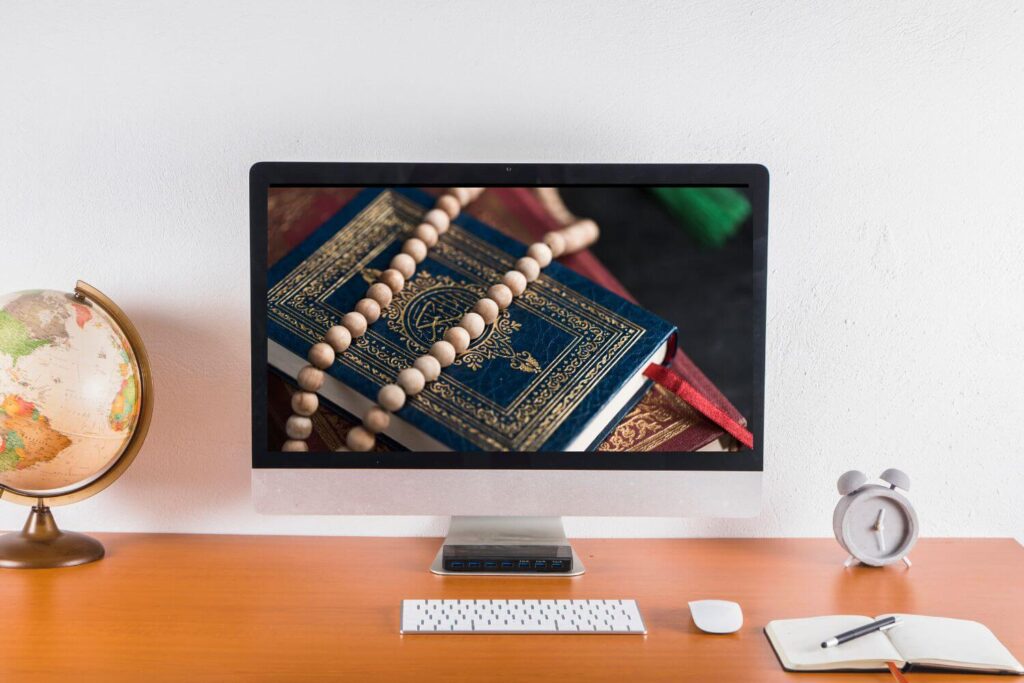
The Role of Technology in Quran Education
In an age where technology is integrated into every facet of our lives, it’s no surprise that education, including Quranic studies, has embraced this transformative wave. The Role of Technology in Quran Education is undeniable, reshaping the way students engage with religious texts and providing new opportunities for learning, accessibility, and personal growth. This article delves into the fusion of technology and Quranic education, exploring how it enhances the learning experience, supports accessibility, and empowers students to embark on a sacred journey.
1- The Transformation Begins
Technology and education are no longer strangers, and Quranic studies have not been left behind. The digital revolution has opened doors to a world where knowledge is at our fingertips, and The Role of Technology in Quran Education is to make this knowledge accessible to all.
2- The Digital Quran
In the past, students of the Quran relied on physical copies and handwritten notes. Today, digital versions of the Quran are easily accessible, allowing individuals to carry this holy text with them on their smartphones or tablets. This accessibility promotes daily engagement with the Quran, whether it’s for recitation, study, or reflection.
3- Interactive Learning Platforms
Modern technology offers a multitude of interactive learning platforms dedicated to Quranic education. These platforms provide structured courses, quizzes, and interactive lessons, allowing students to grasp the intricacies of the Quran in a more engaging and dynamic way. The Role of Technology in Quran Education here is to create a supportive and interactive learning environment.
4- Audio and Visual Resources
One of the most significant transformations in Quran education is the availability of audio and visual resources. These resources enable students to listen to recitations by renowned Qaris (reciters) and watch informative videos explaining the Quran’s teachings. The combination of audio and visual elements enhances comprehension and appreciation of the text.
5- Enhancing Accessibility
The Role of Technology in Quran Education extends far beyond convenience. It plays a crucial role in making Quranic education more accessible to a wider audience, breaking down barriers to learning.
6- Online Classes
The advent of online Quran classes has opened doors for people around the world to access quality Quranic education. No longer bound by geographical constraints, students can connect with qualified instructors and fellow learners from diverse backgrounds. This level of accessibility ensures that The Role of Technology in Quran Education is all-inclusive.
7- Translation and Transliteration
For non-Arabic speakers, understanding the Quran can be challenging. Technology has facilitated the translation and transliteration of the Quran into various languages, making its teachings accessible to a global audience. This step has played a pivotal role in promoting intercultural understanding and dialogue.
8- Quranic Apps
The Role of Technology in Quran Education also shines through Quranic apps. These applications offer translations, tafsir (interpretation), and guidance, allowing individuals to deepen their understanding of the Quran at their own pace. Whether it’s reading a translation or exploring the depths of tafsir, Quranic apps provide valuable resources.
9- Empowering Personal Growth
Quran education is not just about acquiring knowledge; it’s a transformative journey that shapes one’s character and spirituality. Technology is instrumental in empowering students to embark on this sacred journey.
10- Daily Reminders
Many Quranic apps include features for daily Quranic reminders and reflections. These notifications serve as a source of spiritual nourishment, helping individuals stay connected to the Quran’s teachings throughout their daily lives.
11- Self-Paced Learning
The Role of Technology in Quran Education is to empower self-paced learning. Students can revisit and review verses, tafsir, and hadith (sayings of the Prophet Muhammad) at their convenience, allowing for a deep and personal connection with the text.
12- Community Engagement
Technology fosters community engagement among Quranic students. Online forums, social media groups, and discussion platforms enable students to interact, share insights, and support one another on their journey of understanding the Quran.
Want to Learn the Quran? Join Our Free Trail!!! Click Here



